The railway station building at Penzance is a granite rebuild of the Cornwall Railway building for the GWR. Its station yard was enlarged in the 1930s and much more platform accommodation supplied; and it is in essentially in this form now. On the seaward side was goods sheds and engine shed, but these moved eastwards as the space requirements necessitated. The former Signal Box has been relocated from mid way up the platforms to beyond the ends of them, and wooden semaphore signalling was replaced by metal in the 1950s. With the demise of steam, items like turntable and water tower have also been removed.
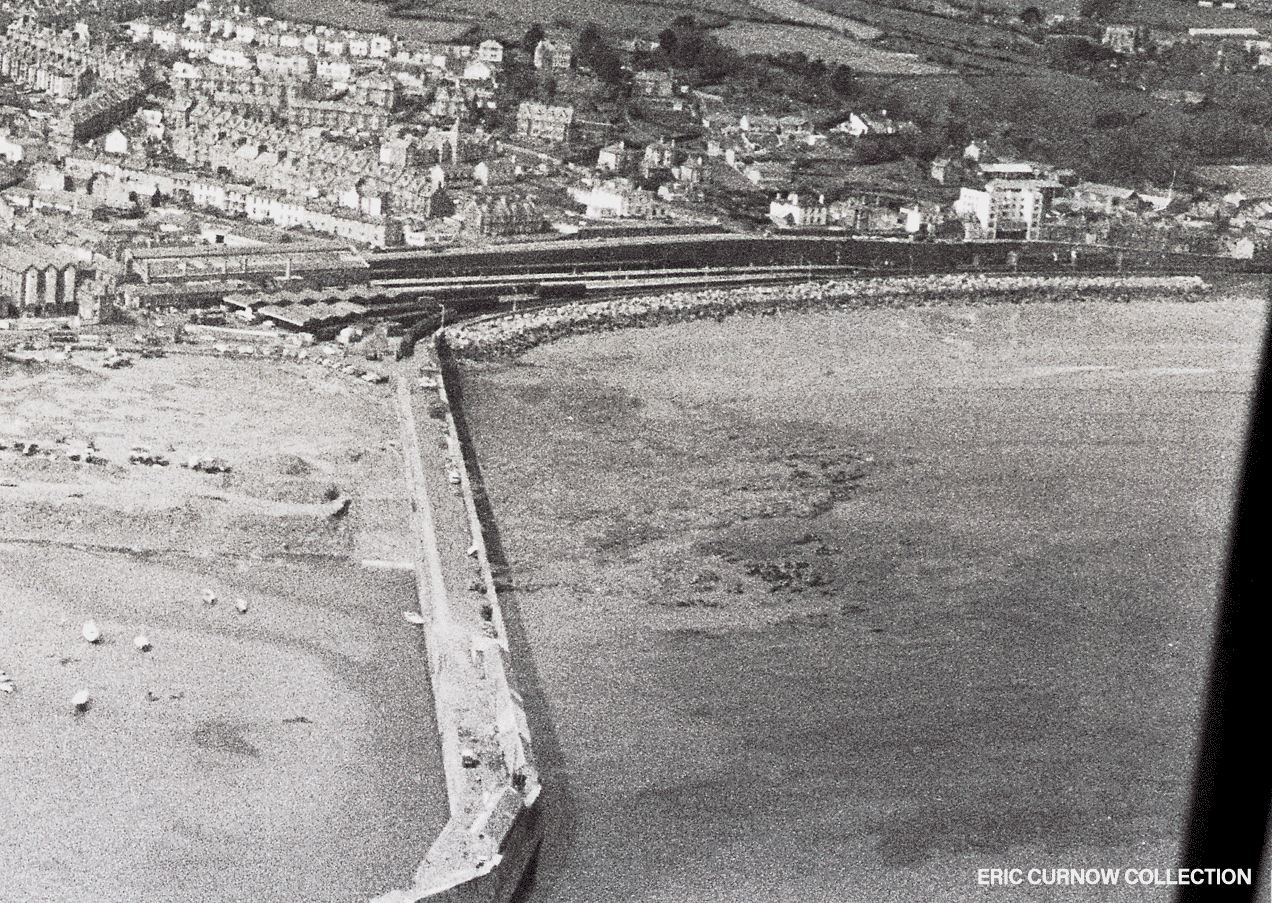 This 1966 view from the Isles of Scilly helicopter shows a northern view of Penzance Station. The station yard is above the end of the pier, with covered goods area to the left, station train shed above those, and platforms extending eastwards. 660507A04-PNZ-STATN-VIS_N
This 1966 view from the Isles of Scilly helicopter shows a northern view of Penzance Station. The station yard is above the end of the pier, with covered goods area to the left, station train shed above those, and platforms extending eastwards. 660507A04-PNZ-STATN-VIS_N
 The view from Lescudjack Castle overlooking Penzance Railway Station in the early days of GWR ownership. The yard looks empty as do the tracks out onto Albert Quay, as a smartly dressed young man surveys the scene. #####AC01-PNZ-STATN-VIS_S
The view from Lescudjack Castle overlooking Penzance Railway Station in the early days of GWR ownership. The yard looks empty as do the tracks out onto Albert Quay, as a smartly dressed young man surveys the scene. #####AC01-PNZ-STATN-VIS_S
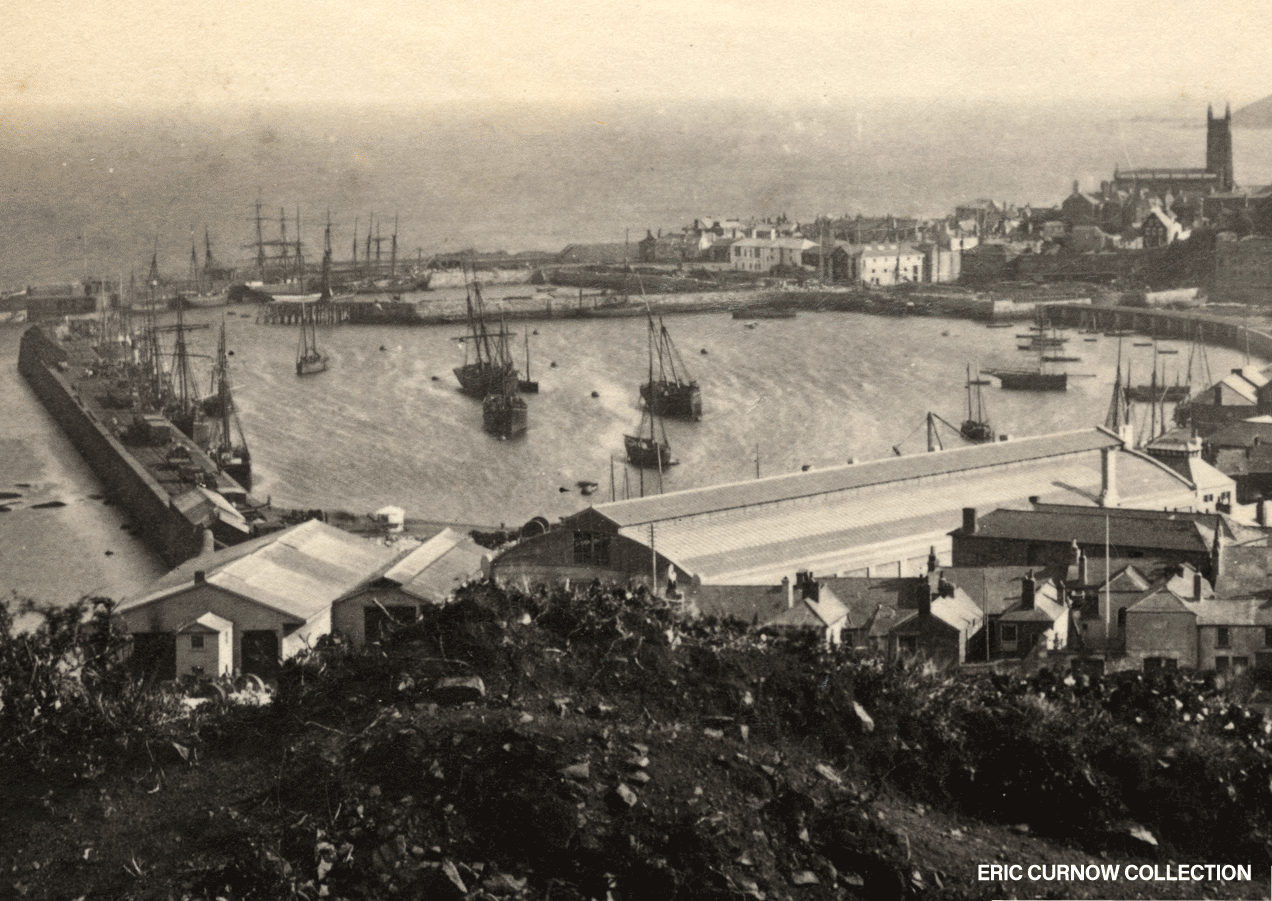 An early view, but probably taken after what seem like excavations of the castle site, debris from which now covers the former hedge and gate. The tide is in, there is activity in the Goods Shed, and goods wagons are on the quay. #####AD01-PNZ-STATN-VIS_S
An early view, but probably taken after what seem like excavations of the castle site, debris from which now covers the former hedge and gate. The tide is in, there is activity in the Goods Shed, and goods wagons are on the quay. #####AD01-PNZ-STATN-VIS_S

This is the left hand portion of a wide negative showing the early Goods Shed and smaller Engine Shed beside it on the seaward side of the station, with a retaining wall curving towards the main line from it … 33###AA01-PNZ-STATN-VI__W
 … and this is the right hand portion – divided like this to make the detail more easily seen. The train shed screen has been partially opened up for ventilation, and a long and short platform, with a couple of sidings between them for storing stock. 33###AA02-PNZ-STATN-VI__W
… and this is the right hand portion – divided like this to make the detail more easily seen. The train shed screen has been partially opened up for ventilation, and a long and short platform, with a couple of sidings between them for storing stock. 33###AA02-PNZ-STATN-VI__W
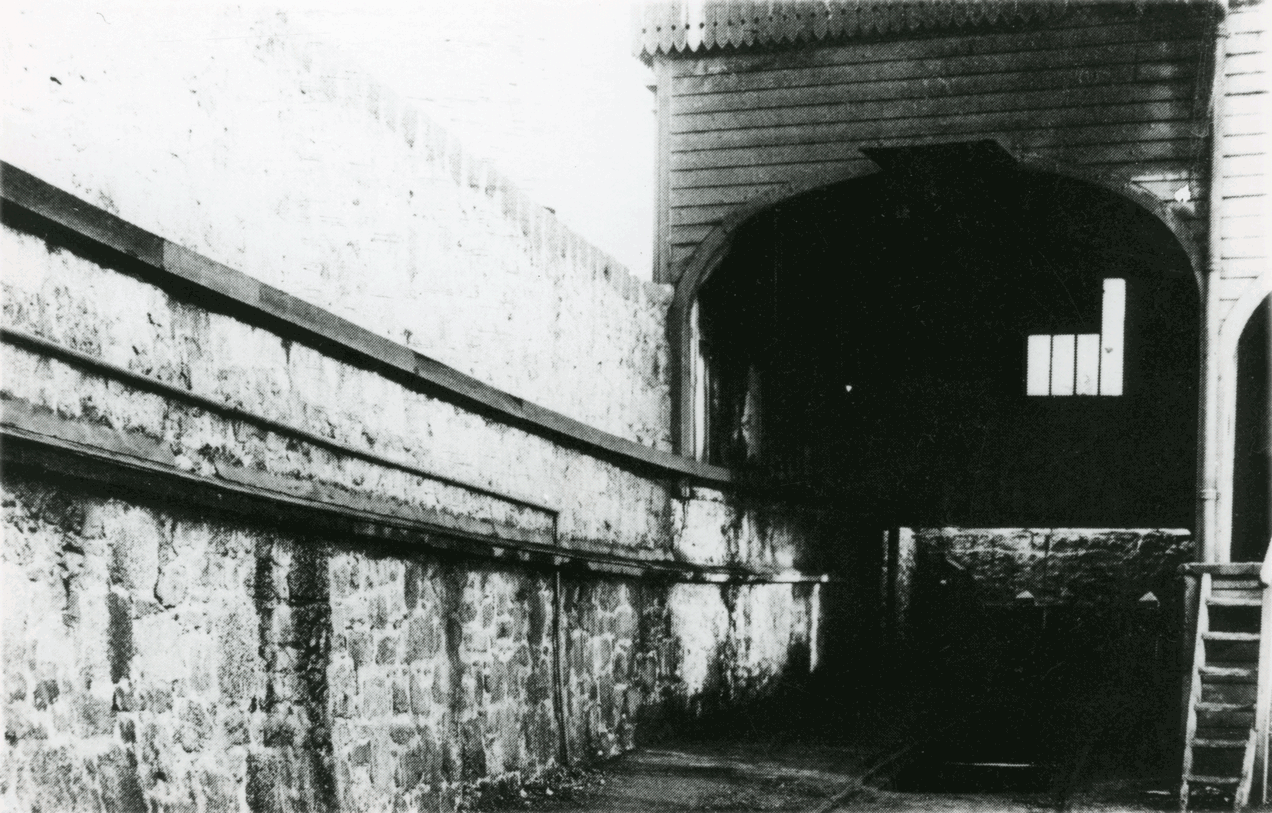 At the opposite end of the station area the Coaling Stage for the second Engine Shed lies squashed between the road wall, the Water Tank and Chyandour Brook. The tightness of the site is clearly seen from the narrow steps and shelter built onto the wall. #####AP01-PNZ-COALG-VI_NE
At the opposite end of the station area the Coaling Stage for the second Engine Shed lies squashed between the road wall, the Water Tank and Chyandour Brook. The tightness of the site is clearly seen from the narrow steps and shelter built onto the wall. #####AP01-PNZ-COALG-VI_NE
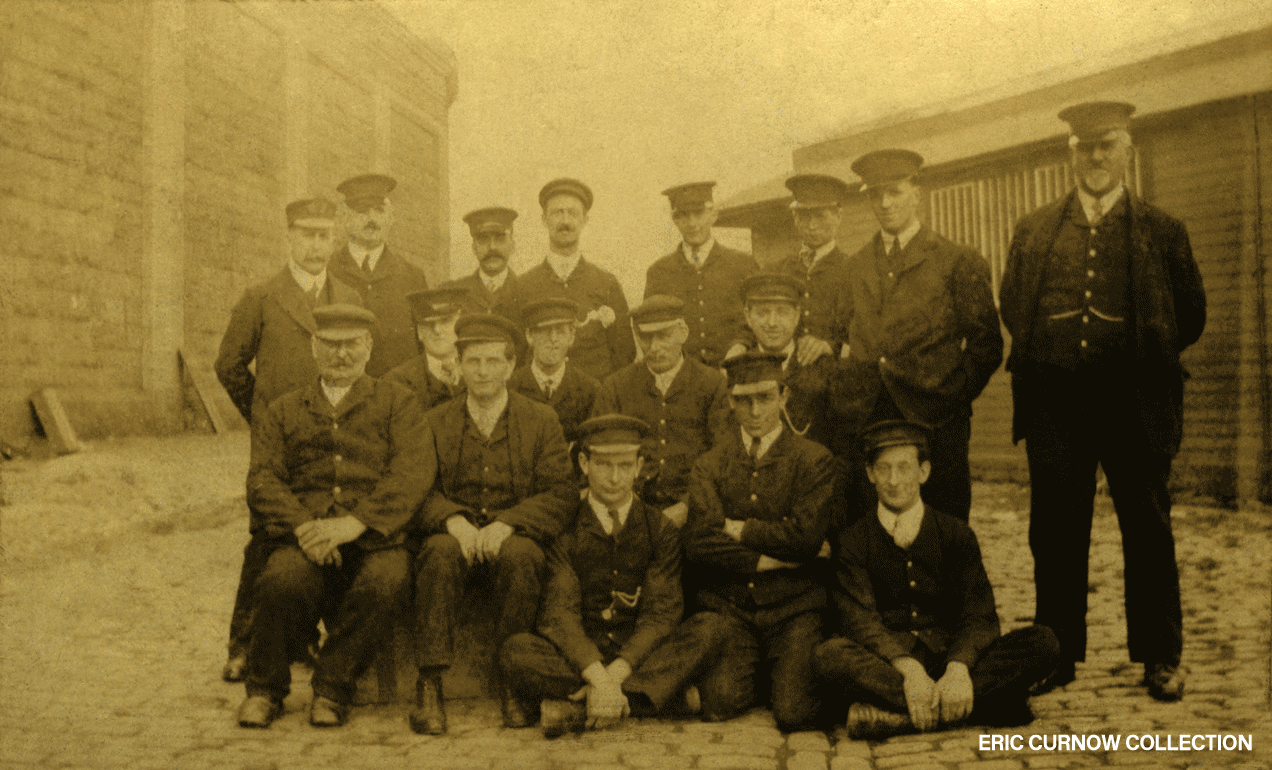 A fairly impromptu portrait of staff at Penzance Station in the 1920s, taken between the side of the main building and the wall of the first engine shed beside it – a little of the awning of the goods shed is just visible behind that. Distinction of rank seem largely relaxed, as a mixture sit on boxes, on the granite setts in front, or stand behind. 2####AH01-PNZ-STAFF-POSNG
A fairly impromptu portrait of staff at Penzance Station in the 1920s, taken between the side of the main building and the wall of the first engine shed beside it – a little of the awning of the goods shed is just visible behind that. Distinction of rank seem largely relaxed, as a mixture sit on boxes, on the granite setts in front, or stand behind. 2####AH01-PNZ-STAFF-POSNG
 The station’s main entrance to pedestrians was on the left corner of this picture, with booking hall behind it and stairs down to the concourse. Ancillary offices spread from it towards the sea on the right. 6####AH01-PNZ-S_BLG-VI_NE
The station’s main entrance to pedestrians was on the left corner of this picture, with booking hall behind it and stairs down to the concourse. Ancillary offices spread from it towards the sea on the right. 6####AH01-PNZ-S_BLG-VI_NE
 This is the town-facing elevation of Penzance Station looking north, with the staff entrance just right of centre. An ambulance rushes up the main street between the station entrance and the Railway Hotel. 5####AC01-PNZ-B_BLG-VI__N
This is the town-facing elevation of Penzance Station looking north, with the staff entrance just right of centre. An ambulance rushes up the main street between the station entrance and the Railway Hotel. 5####AC01-PNZ-B_BLG-VI__N
 Western National’s advertisement has now been joined by a stove-enameled British Railways sign and illuminated ‘Penzance Station’ lettering on the corner of the building. A revised traffic system is being trialed. 6####AO01-PNZ-S_BLG-VI_NE
Western National’s advertisement has now been joined by a stove-enameled British Railways sign and illuminated ‘Penzance Station’ lettering on the corner of the building. A revised traffic system is being trialed. 6####AO01-PNZ-S_BLG-VI_NE
 No – not the city in Yorkshire: Sheffield is also a hamlet just over the hill beyond Newlyn from here. The hut on the left led me to acquire this as I’ve never seen it pictured elsewhere: presumably it is a Western National inspectors’ hut or similar. I can distantly remember buses operating from here and pre-cast concrete shelters with asbestos roofing just behind the photographer. 5####CL01-PNZ-S_YRD-VIS_N
No – not the city in Yorkshire: Sheffield is also a hamlet just over the hill beyond Newlyn from here. The hut on the left led me to acquire this as I’ve never seen it pictured elsewhere: presumably it is a Western National inspectors’ hut or similar. I can distantly remember buses operating from here and pre-cast concrete shelters with asbestos roofing just behind the photographer. 5####CL01-PNZ-S_YRD-VIS_N
 The train shed of Penzance Station in the early afternoon of a dull day in 1964. To the left as part of the consist is a coach marked ‘Penzance and Kensington Milk Train’ – its appearance similar to the other coaches in view, though with less glossy paintwork. 640329A01-PNZ-S_BLG-VI_SW
The train shed of Penzance Station in the early afternoon of a dull day in 1964. To the left as part of the consist is a coach marked ‘Penzance and Kensington Milk Train’ – its appearance similar to the other coaches in view, though with less glossy paintwork. 640329A01-PNZ-S_BLG-VI_SW
 The “Running in” Board of platforms 3 and 4 at Penzance Station, with the loading gauge behind. It is embedded in a rock edged flower bed and consists of three enamel boards suspended on a frame slung between two old rail uprights. 6607#AA01-PNZ-SIGNS-R_I_B
The “Running in” Board of platforms 3 and 4 at Penzance Station, with the loading gauge behind. It is embedded in a rock edged flower bed and consists of three enamel boards suspended on a frame slung between two old rail uprights. 6607#AA01-PNZ-SIGNS-R_I_B
 This is one of the several “Totem” signs, fixed to lamp posts along the platforms of the station. The design was an early attempt to unify the rail system, emulating London Transport’s in an elongated form, and using regional coloured enamels. 6607#AA02-PNZ-SIGNS-TOTEM
This is one of the several “Totem” signs, fixed to lamp posts along the platforms of the station. The design was an early attempt to unify the rail system, emulating London Transport’s in an elongated form, and using regional coloured enamels. 6607#AA02-PNZ-SIGNS-TOTEM
 Built on the site of the second Engine Shed, this is the second Signal Box at Penzance – its nameplate is in the GWR style with white lettering. The road behind is extremely narrow at this point, with no pavement on the nearest side. 6####BI01-PNZ-SIG_B-VI__N
Built on the site of the second Engine Shed, this is the second Signal Box at Penzance – its nameplate is in the GWR style with white lettering. The road behind is extremely narrow at this point, with no pavement on the nearest side. 6####BI01-PNZ-SIG_B-VI__N
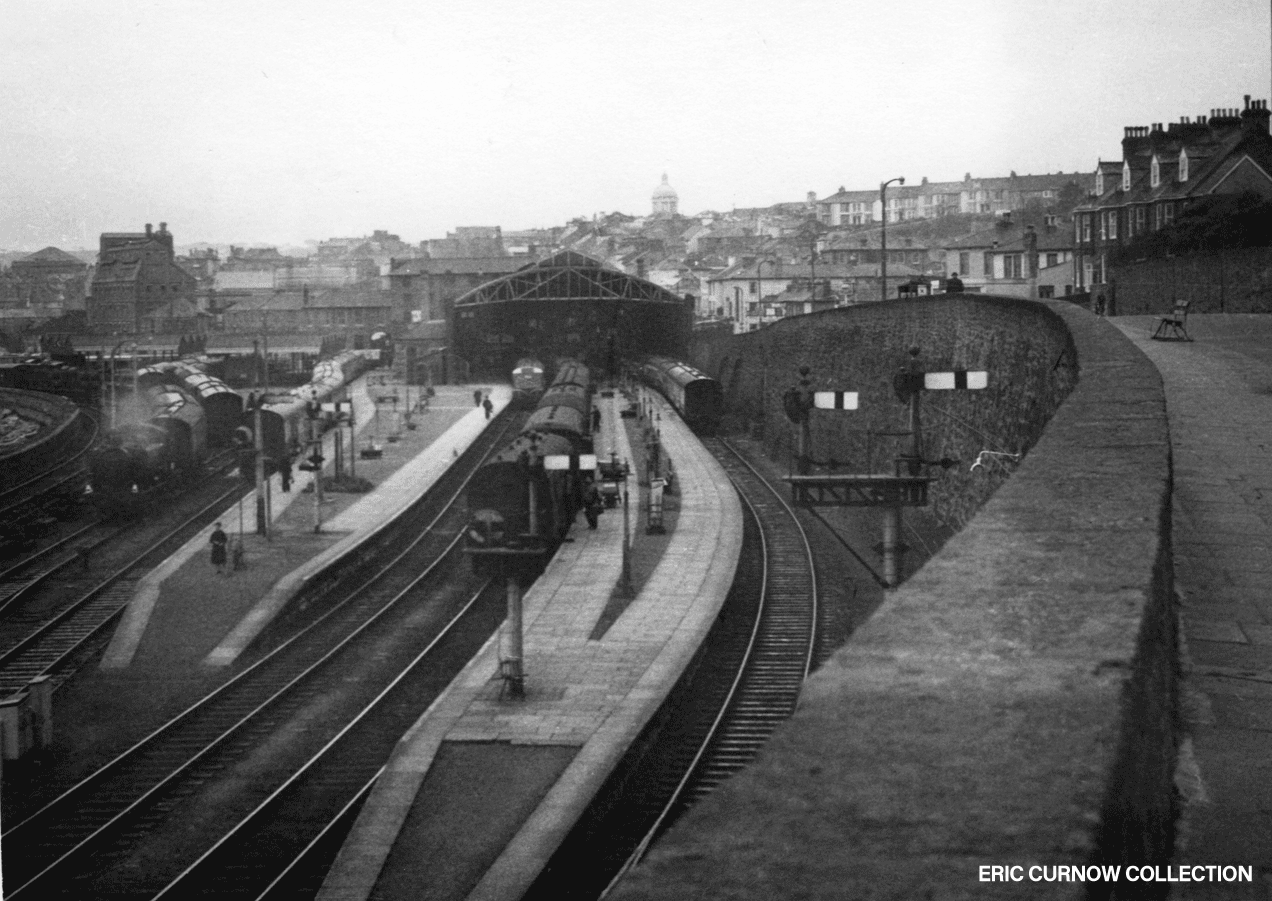 Penzance Station viewed from the on the cliff wall in the early 60s. A 94XX pannier tank shunts in the sidings, a 3-car DMU rests in Platform 3, and empty stock dominates the other tracks. It looks like an additional van has been fly-shunted close to the longest rake. 610312A01-PNZ-STATN-VI__W
Penzance Station viewed from the on the cliff wall in the early 60s. A 94XX pannier tank shunts in the sidings, a 3-car DMU rests in Platform 3, and empty stock dominates the other tracks. It looks like an additional van has been fly-shunted close to the longest rake. 610312A01-PNZ-STATN-VI__W

People climb the steps to what was then the Booking Office cum main street entrance at Penzance Station, while others make their way through the ticket gates onto the platforms, or talk to the man inside Wyman’s Bookstall. Behind the coaches in maroon livery is a D8XX Warship that has brought in an earlier service and a plethora of interesting signs. 63###AI01-PNZ-STATN-CNCSE

Among those milling around the concourse of Penzance Station are girls from the School of St Clare, who wile away the time at Wymans’ Bookstall before their train departs, in 1963. I can only distantly remember Wymans, and believe it was next in the hands of WH Smith (who also had a shop opposite) before it became John Menzies – but prepare to stand corrected. 63###AI02-PNZ-STATN-CNCSE
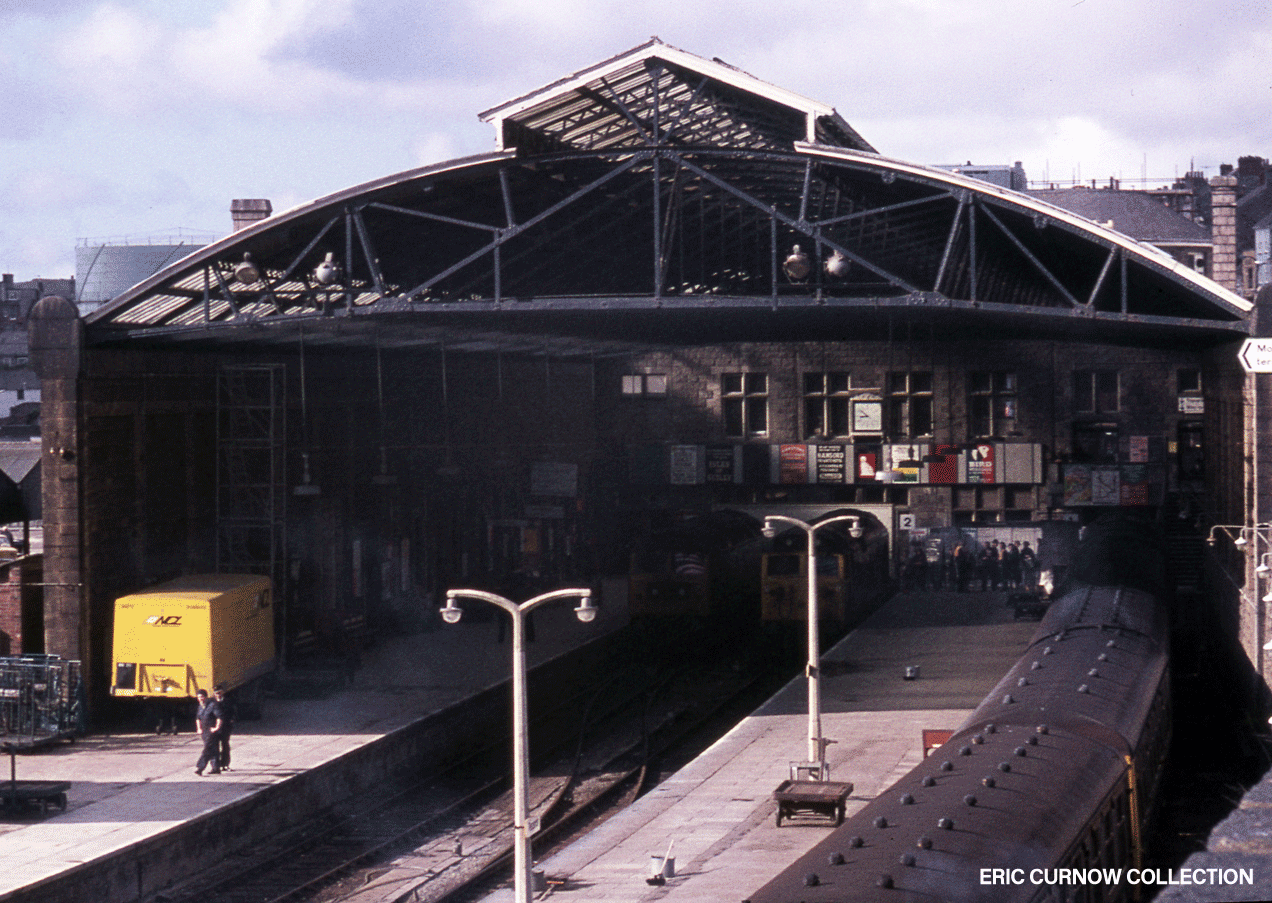 This 1970s view of the front of Penzance Station building shows the complete removal of the weather screens, and additional spotlights subsequently fitted. A 47 and 50 lurk in the shadows and passengers wait at the barrier to board the DMU service. 7####AW01-PNZ-STATN-VI_SW
This 1970s view of the front of Penzance Station building shows the complete removal of the weather screens, and additional spotlights subsequently fitted. A 47 and 50 lurk in the shadows and passengers wait at the barrier to board the DMU service. 7####AW01-PNZ-STATN-VI_SW
 A broader view westwards includes a DMU and a Class 50 awaiting their departures, with another 50 parked left in the background. Centrally there is a yellow National Carriers trailer, one of which frequently sheltered there just under the roof. 78###AD01-PNZ-S_BLG-VI__W
A broader view westwards includes a DMU and a Class 50 awaiting their departures, with another 50 parked left in the background. Centrally there is a yellow National Carriers trailer, one of which frequently sheltered there just under the roof. 78###AD01-PNZ-S_BLG-VI__W
 A later view of the Signal Box, now sadly devoid of its more impressive nameplate. Like the ‘Hotel Royale’ above it – now ‘Royale Court’ – the building has been modernised, with replacement windows, guttering and drainpipes. 75###AM01-PNZ-SIG_B-VI_SW
A later view of the Signal Box, now sadly devoid of its more impressive nameplate. Like the ‘Hotel Royale’ above it – now ‘Royale Court’ – the building has been modernised, with replacement windows, guttering and drainpipes. 75###AM01-PNZ-SIG_B-VI_SW
 Penzance Station Yard in 1980, taken from the top of a bus, shows the two resident shunters, a Peak, and a pair of Class 50s parked up. The building at front left is the Boiler House for the station, and the lady in the Bus Station possibly my mother(!) 80###AH01-PNZ-STATN-VI__N
Penzance Station Yard in 1980, taken from the top of a bus, shows the two resident shunters, a Peak, and a pair of Class 50s parked up. The building at front left is the Boiler House for the station, and the lady in the Bus Station possibly my mother(!) 80###AH01-PNZ-STATN-VI__N
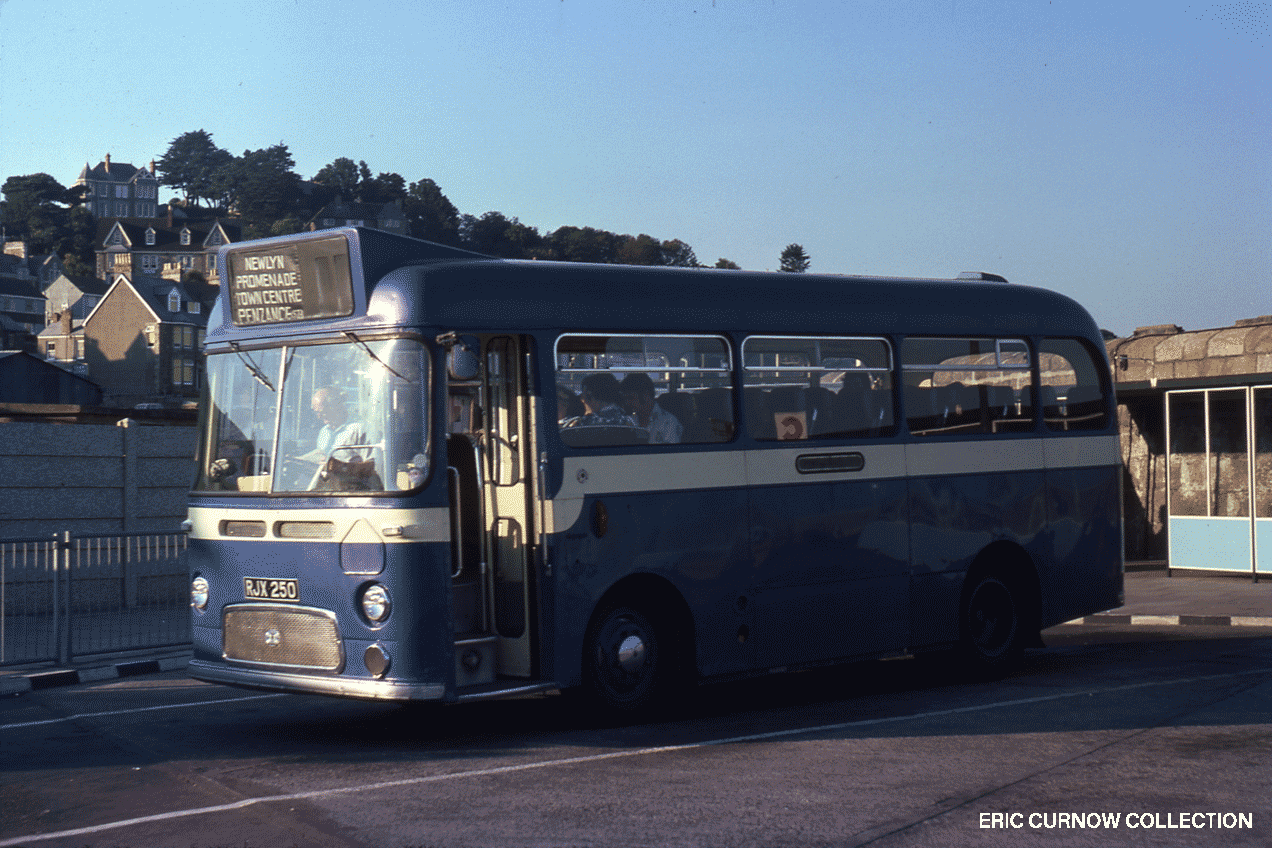 This was the scene immediately behind the station yard concrete slab wall, where tracks used to run onto behind the bus along Albert Pier. The bus owner/driver, Mr Harvey, reads while waiting for the departure time, with a few passengers aboard. 760906A01-PNZ-OMBUS-PARKD
This was the scene immediately behind the station yard concrete slab wall, where tracks used to run onto behind the bus along Albert Pier. The bus owner/driver, Mr Harvey, reads while waiting for the departure time, with a few passengers aboard. 760906A01-PNZ-OMBUS-PARKD

The ubiquitous seagull pads around the top of the Heliport bus in Penzance Station yard as it awaits pessengers arriving on the next down service. I remember such a vehicle in blue and cream livery, but this was taken after I’d been in London for several years, at the time when the station building was being enlarged. 8####ZZ01-PNZ-M_BUS-PARKD